But I love delicacy and this to me—
the brilliance and beauty of the sun—desire has allotted. (Fr. 58)
Sappho
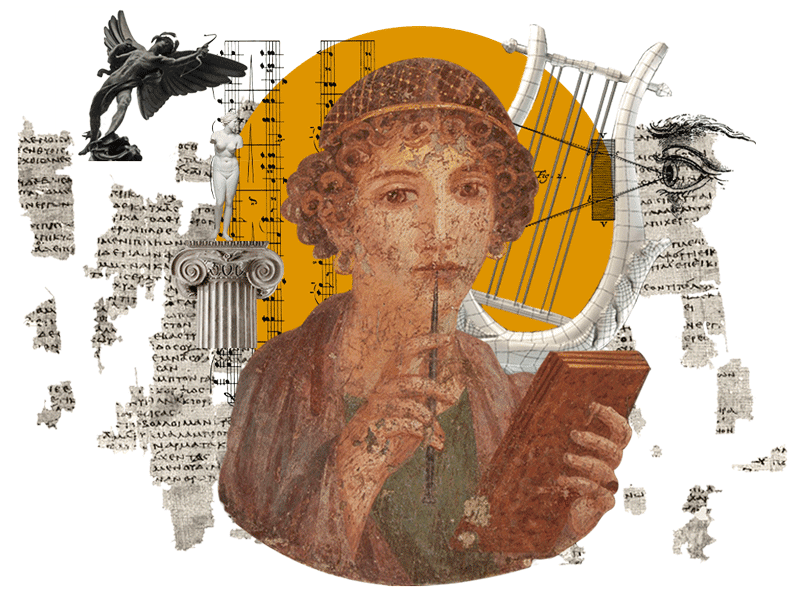
Sappho
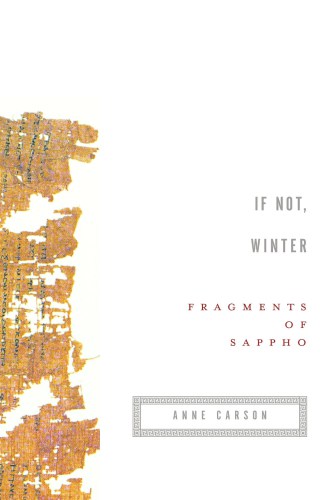
Anne Carson, If Not, Winter: Fragments of Sappho, Vintage Books, New York
It is important to remember that Sappho performed her poems to audiences, singing them accompanied by a lyre she played herself.
Therefore, we remember that her lines are often dramatic rather than being internal monologues. Her lines were collected in books, but we have only a fraction of what she actually wrote, collected on fragments of papyri. Many of the fragments are very short, sometimes as short as one line on a page, as, for example, Fragment 38, “you burn me,” three short words take up the entire page, white space pervades. Sitting with the fragment brings up questions immediately: Who is the you? Who is the me? What is the context? Questions like this come up over and over in the fragments, and Anne Carson’s translation emphasizes the rupture of the lost pieces by using the ] and [ symbols: as she describes in her introduction, “When translating texts read from papyri, I have used a single square bracket to give an impression of missing matter, so that ] or [ indicates destroyed papyrus or the presence of letters not quite legible somewhere in the line. It is not the case that every gap or illegibility is specifically indicated: this would render the page a blizzard of marks and inhibit reading. Brackets are an aesthetic gesture toward the papyrological event rather than an accurate record of it” (xi). The brackets, then, act as a reminder that what we are reading, even in the fragments that contain multiple lines and somewhat coherent narrative, is not whole, that there are gaps and ruptures we have no way of recovering. We find reading Sappho deep expressions of desire and longing, but we cannot find coherent characterization, definitive speakers or certain consistency in narrative. The question is what to do with such uncertainty.
A class might discuss, for example, the first line of Fragment 94: “I simply want to be dead.” There are two women in this poem. Which one is the I of the first line? And what changes in the relationship between the two women when we assign the first line to each one. Then who is the we that appears in line 8? How does this we turn the poem from one between two people into something more communal? Does that make a difference in the reception of the poem? As Ellen Greene argues, “The picture in stanzas five through ten is one of idyllic beauty and blissful satisfaction. As against the clearly delineated voices and personalities at the beginning, here, the ‘I,’ ‘you,’ and ‘we’ of the poem are all linked in the aura of sensations and erotic stimulation. Boundaries of person, object, and place seem to break down as everything in the environment dissolves into a totality of sensation.” [1]
Xavier Buxton reads a similar slippage in lyric subject in Fragment 31 [2], wherein the speaker, taken with desire, claims, “no speaking/is left in me,” and yet continues to speak. In Carson’s translation of this fragment, after “tongue brakes,” she uses the passive voice to articulate the described sensations of the body: “and thin/fire is racing under skin/and in eyes no sight and drumming/fills ears.” With this split in subjectivity, the speaker becomes paradoxically not a speaker but an observer just like the audience.
[1] Greene, Ellen. “Apostrophe and Women’s Erotics in the Poetry of Sappho.” Transactions of the American Philological Association. Vol. 124 (1994), pp. 41-56. JStor https://www.jstor.org/stable/284285 (p. 49)
[2] Buxton, Xavier. “Sappho and Shelley: Lyric in the Dative.” The Cambridge Quarterly , Vol. 40, No. 4 (December 2011), pp. 342-361. JStor https://www.jstor.org/stable/43492367
Why This Text is Transformative?
Using Sappho is a way to bring into the classroom themes around beauty, longing, loss and subjectivity.
Using Sappho is a way to bring into the classroom themes around beauty, longing, loss and subjectivity. There are a number of ways to approach this text. One way would be to situate students in the middle of the fragmentation and rupture within the poems, as described above, in order to think through the jagged and jarring structure of the text, the ways of not knowing who a speaker is, and the silences that are in many ways louder than the actual words on the page. Another approach would be to place Sappho historically and explore the mythological figures within the text, perhaps by pairing it with a text like The Iliad in order to familiarize students with the mythological characters like Hera, Aphrodite, Eros and others who populate the poems (Carson’s text also has a Who’s Who at the end with brief descriptions of the historical & mythological characters and places that appear in the poems). A third approach is to allow students for inquiry and creative work. Single lines might be a jumping off moment for journaling or for the beginning of a student’s original poem.
A Focused Selection
Study Questions
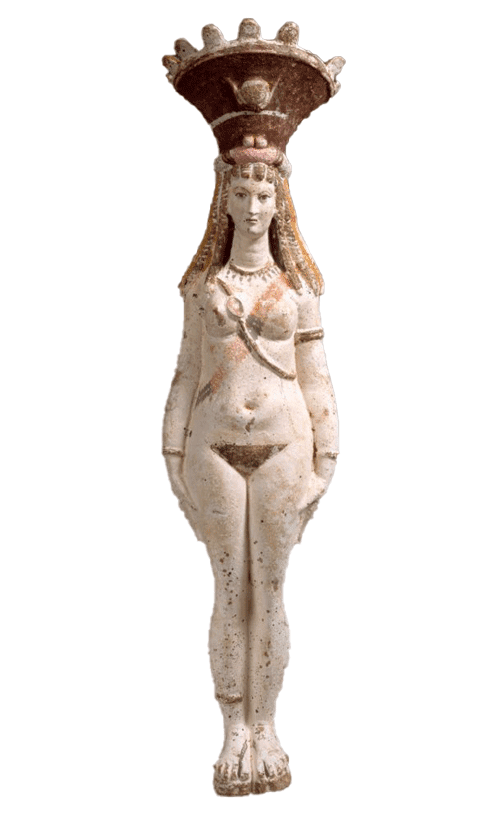
Try approaching these poems first as they appear on the page. Chose two poems and respond to the language and images as you first encounter them on the page. After your initial response, turn to Carson’s notes and Who’s Who at the back to fill in knowledge by looking at any information about your chosen poems. For example, Fragment 58, cited here at the top of the page, Carson tells us may be based on the myth of Tithonos and Eos. She also provides an alternate construction for the last two lines. What changes in the fragment when knowledge and alternatives are overlaid with the text the students first encounter? What changes in the poem when Carson shifts the construction of the words around?
In the notes section for Fragment 98a, Carson provides background for the custom to have women wear a headscarf. She pairs this custom with concepts of cosmos/order and links the “headbinder” or veil with the same concept in Fragment 81b. Respond to the way the poem first appears to you on the page and then consider your own and Sappho’s position toward the headbinder in light of Carson’s notes.
One of the last Fragments, 188, is one word: “mythweaver.” What meaning does the word take on in its context on the page as it stands? The notes tell us that mythweaver is Sappho’s reference to Eros. Carson asks in the notes, “Why does Eros weave myths?” and answers, “Perhaps because desire acts in loves as a lure for the whole life of the imagination…one may say of Sappho no less than of Sokrates that a knowledge of erotic things is the chief pursuit of life.” Do you agree? How do the poems in this collection support such a statement (or not)?
What questions come up for you as you read Sappho’s fragments? Chose two poems and simply ask questions of it. (See above the example of Carson’s questions for Fragment 188)
Building Bridges
A Recommended Pairing
The Iliad
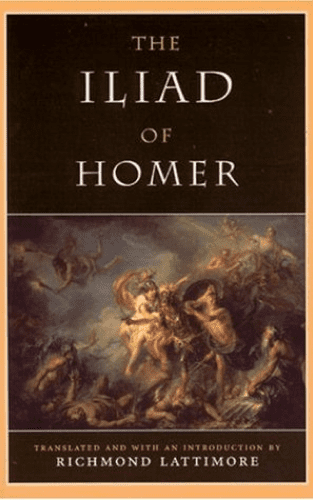
The Iliad: There are multiple references in Sappho’s poems to the battle of Troy. Pairing these texts gives context to some of Sappho’s references.
Love in the Time of Cholera

Another interesting pairing would be with Love in the Time of Cholera, both texts exploring desire and the beloved.
Supplemental Resources
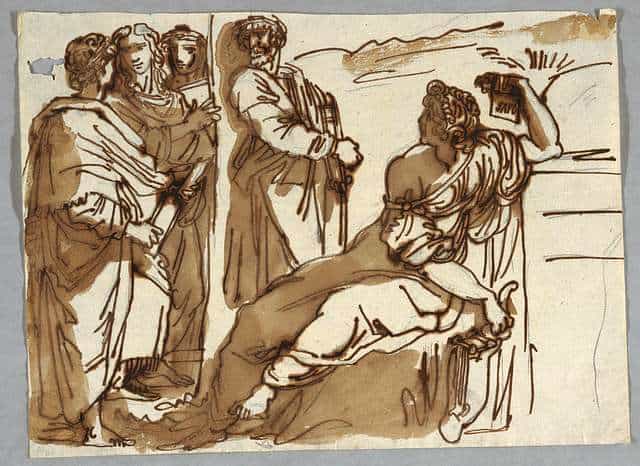
Drawing, Group with Petrarch and Sappho in "Parnassus" after Raphael Sanzio, ca. 1820
New Yorker: Daniel Mendelsohn on Sappho
Text Mapping
Discipline Mapping
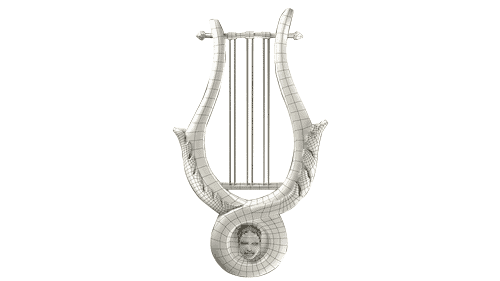
English/Composition Studies
Humanities
Area Studies
Page Contributor


